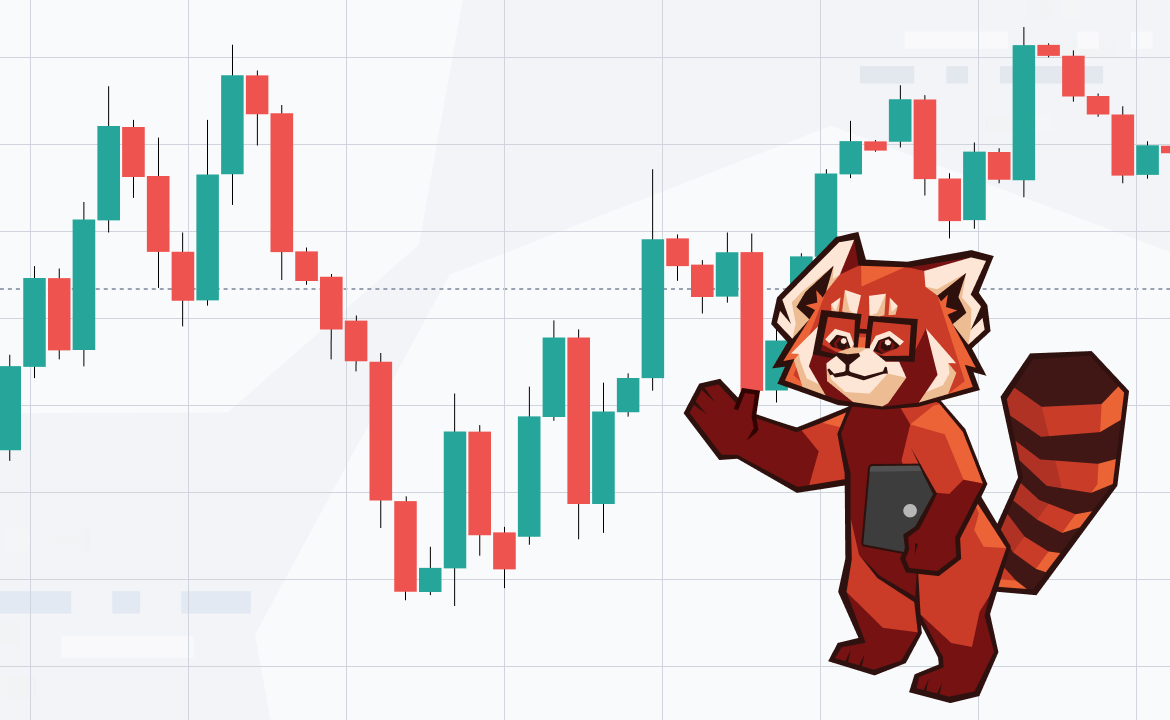Learn the differences between these methods for real-time data processing

Enterprise messaging and event streaming are two approaches that allow organizations to manage and process real-time data.
Enterprise messaging is a means for applications and services to communicate with one another through a central message broker. With enterprise messaging, a messaging broker acts as an intermediary to ensure the delivery of messages between your applications and services in a decoupled manner.
This means that applications or services don't have to be directly connected to each other to exchange information. Enterprise messaging systems such as IBM MQ, RabbitMQ, and ActiveMQ can standardize the flow of data between interdependent services, even if they are written in different languages or on different platforms.
Event streaming (also known as “data streaming”), on the other hand, deals with the continuous and real-time processing of data in your infrastructure. With event streaming, your data can be processed as soon as it's generated, without the need to store it in a centralized database. Event streaming systems such as Apache Kafka® optimize the flow of large volumes of data from multiple sources to your downstream services, allowing for low latency and cost-efficient processing of data.
While both enterprise messaging and event streaming can be used to support asynchronous, loosely coupled, and scalable applications, they are different in terms of their design and optimal use cases.
In this post, we’ll explore their use cases and the systems' differences in reliability, flexibility, performance, and scalability, among other factors.
What is an enterprise messaging system?
An enterprise messaging system (EMS) is a platform that reliably delivers messages between applications and services in your infrastructure, from a producer to one or more consumers. Messages can be any type of business data and are typically used to convey information about a particular business transaction or event.
To account for various user scenarios and their requirements, enterprise messaging systems offer various messaging patterns and delivery guarantee patterns, such as point-to-point messaging, publish-subscribe, and exactly-once delivery. These patterns provide flexibility and scalability in message delivery while ensuring the integrity and security of the communication.
In an enterprise messaging system, message queues play a critical role in processing data. The process typically begins with a data source publishing a message, which is then sent to a message queue by the central broker. The broker determines the appropriate consumer(s) available to consume the message and forwards it accordingly.

Enterprise messaging architecture diagram
Point-to-point messaging is one of the main messaging patterns utilized in these systems. This approach involves a single producer publishing a message to a specific queue, which is then delivered to a single consumer, ensuring that messages are delivered in the correct order and that each message is consumed by only one consumer. Once the message has been successfully consumed, it's deleted from the queue. This ensures that messages are delivered with no duplications, which is crucial in many business scenarios.
For one-to-many messaging scenarios, enterprise messaging systems offer the publish-subscribe messaging pattern. In this pattern, a publisher application sends messages to a topic, which is essentially a logical channel. One or more subscriber applications can then receive messages from that topic. With a fine-grained subscription, you can filter messages to allow your consumers to receive all sent messages or just those that meet certain requirements. This allows for the efficient dissemination of information to multiple recipients with minimal overhead.
Pros and cons of enterprise messaging
Enterprise messaging systems provide a number of benefits, one of which is a high level of reliability, which is achieved by provisioning message order guarantees and assuring message deliveries.
Enterprise messaging systems are designed to be flexible and adaptable to various platforms and data formats, making them suitable for larger software systems with diverse and dynamic requirements. Enterprise messaging systems' fine-grained subscriptions, which enable control of the consumption of publish-subscribe topics, allow for more efficient use of resources and reduce the likelihood of message overload or loss.
Message brokers in enterprise messaging systems provide additional capabilities that are not typically found in streaming data systems. These include hierarchical topic subscription support, which allows for a structured topic hierarchy and more granular control over topic subscriptions. Enterprise messaging systems also support topic-level data filtering, enabling the filtering of messages based on specific criteria at the topic level. This enhances the flexibility and efficiency of message consumption.
Furthermore, enterprise messaging systems often incorporate fine-grained role-based access control (RBAC) mechanisms for topics and queues. These mechanisms are commonly backed by user stores like Active Directory or LDAP, providing robust security and access control capabilities.
Enterprise messaging solutions do have some downsides and limitations. For instance, compared to streaming data systems, they are not as efficient in most cases, especially when working with large amounts of data or traffic. Additionally, because enterprise messaging systems are often optimized for processing discrete, self-contained messages rather than continuous event streams, they are not the optimal choice for complex event processing.
Another potential downside of enterprise messaging systems is that they can be harder to scale than streaming data systems. While messaging systems are designed to support a wide range of platforms and data formats, this can sometimes make them less efficient when it comes to handling high-volume data streams. Enterprise messaging systems may also require more maintenance and management than other types of messaging systems, particularly as they grow in complexity and scale.
One notable consideration is that message brokers in enterprise messaging systems are not primarily designed for long-term message retention. Although some brokers offer durable queues and topics, storing messages for an extended period can be expensive due to increasing storage costs with data volume.
Enterprise messaging systems assure message ordering by queueing messages in order. However, in some cases, message queues may not transmit messages in the order they were queued.
For example, when multiple consumers are reading a queue, if a slower consumer is still processing a prior message when a new one arrives, another consumer may receive the second message first. This changes the message order, and the messages are delivered out of sequence. Network latency can also delay message delivery and upset your message ordering.
Additionally, some messaging systems allow messages to be prioritized, delivering higher-priority ones first, which also affects the order.
Enterprise messaging use cases
Enterprise messaging can be used in a variety of scenarios that require reliable, real-time communication between different applications, systems, or components of a complex IT infrastructure. Its communication focus is particularly useful in cases where you need two-way communication between services and requests or responses.
For instance, consider a financial platform such as Bloomberg, which offers customers real-time financial news and market data as well as applications that service real-time traders. Bloomberg's infrastructure needs to facilitate messages to customers and receive and process requests while exchanging real-time data internally for its applications to run smoothly. Enterprise messaging is used as the foundation for this infrastructure, processing millions of reliable message exchanges daily.
Enterprise messaging has targeted reliable delivery to ensure that the message is sent directly to the backend system responsible for processing the transaction. Depending on the application's needs and the message's importance, different levels of message reliability and priority can be used. It also has transient data persistence, where the message data is only stored until it has been processed by the intended recipient or has expired. This is beneficial for the system's resource management since data does not need to be persisted longer than required.
What is event streaming?
Event streaming enables the real-time processing and analysis of data from various sources, such as IoT devices, social media platforms, and enterprise systems. It involves the continuous transmission of data records or events to downstream services, such as another processing system or a platform, where it can then be used for immediate analysis and insights.
To support high-speed data processing and real-time decision-making, event streaming systems provide scalability, fault tolerance, low latency, and high throughput. To support various use cases and data sources, they also offer multiple alternatives for data ingestion and processing.
The term "streaming" implies a continuous, endless stream of data being processed in real time for your use. Event streaming solutions commonly have three main components:
- Data producers: Applications and systems that produce your required data
- Data consumers: The downstream applications and systems that require this raw or processed data for their various functions
- A streaming data platform: A system that receives, processes, and analyzes data from multiple sources and sends it on to your desired services

Example event streaming architecture diagram
As the amount of data being generated continues to grow rapidly, event streaming solutions are required to efficiently aggregate and process the data they receive and make it available for use by multiple services in real time. Event streaming platforms employ a range of sophisticated techniques that enable efficient scaling of processes to handle large volumes of data and traffic while also ensuring high performance and low latency. These techniques could include data partitioning, data replication, and distributed processing.
Data partitioning involves splitting data into smaller chunks that can be processed in parallel, while replication involves duplicating data across multiple nodes for redundancy and fault tolerance. Distributed processing refers to the use of multiple computing nodes to process data in parallel, further increasing performance and speed.
It's important to note that event streaming solutions primarily support fan-out, broadcast, or pub-sub messaging semantics, where data is distributed to multiple consumers. Unlike enterprise messaging, which focuses on point-to-point messaging between specific applications or services, event streaming is designed for broader data dissemination and real-time processing.
Pros and cons of event streaming
Event streaming enables businesses to process and analyze high volumes of data from multiple sources in real time, providing quick insights and enabling prompt decision-making. Most event streaming solutions provide you with advanced options for complex event processing.
Compared to enterprise messaging, event streaming solutions are more cost-effective to scale, thanks to their ability to horizontally scale and handle large volumes of data and traffic. This means that when demand for data processing or delivery increases, additional computing resources can be added to the system in a horizontal, parallel manner without needing to replace or upgrade existing hardware. Event streaming is also optimized for multiple connections, providing data persistence and message history to inform a larger number of data consumers.
Event streaming provides a flexible approach for handling various types of data producers and consumers. However, the increasing number and complexity of data types and application requirements can impact the cost and scalability of event streaming solutions. Additionally, event streaming solutions are less optimized for processing and delivering individual messages, and ensuring the correct ordering of data in the data stream can be challenging. As a result, discrepancies and duplications may occur.
Compared to an enterprise messaging system, an event streaming solution might require more storage space due to data retention policies where data is not deleted after consumption. Event streaming is also less suitable for request-reply message patterns and targeted communication compared to the reliable delivery guarantees of enterprise messaging systems.
Event streaming use cases
Event streaming is a powerful tool for handling the real-time processing of events and data between different applications, systems, or components of an IT infrastructure. It's especially useful in scenarios where high volumes of data need to be processed, analyzed, and made available in real time for downstream processes.
For example, consider Uber, a ride-hailing company with multiple applications continuously generating real-time data on events. Uber needs to share a driver's current status, process passenger requests, and update traffic patterns while informing other real-time monitoring services. Event streaming can be used to process this continuous information from multiple services to create a real-time view of the organization's infrastructure.
This view can help Uber react faster to changing conditions, optimize its operations, and make more effective time-sensitive business decisions. Moreover, by keeping a history of messages, different segments of the company's infrastructure can use the compiled data to identify helpful patterns over time, such as peak demand times or areas with higher numbers of drivers.
Real-time market data monitoring and market trend analysis are all also possible with event streaming. These are particularly necessary for high-frequency trading, where every second counts.
Financial institutions can use event streaming to identify and prevent fraudulent transactions. Event streaming also enables real-time system log monitoring and analysis, making locating and correcting IT problems simpler.
Retail marketing and sales strategies can also be informed by event streaming, which can be used to track inventories, evaluate customer behavior, and provide real-time information. Businesses can then react quickly to market developments and make data-driven decisions.
For example, an e-commerce business could use event streaming to enable real-time analysis of customer behavior, track the popularity of certain products, and monitor product inventory in real time. To enhance the online shopping experience for customers, event streaming may also be used to track website traffic and user activity.
In the healthcare industry, event streaming can be used to provide real-time patient monitoring and predictive data analysis. Healthcare professionals can review patient data in real time and take rapid action thanks to event streaming. Additionally, it can be used to track medical equipment and supplies, ensuring that hospitals and clinics have everything they need.
Although these are just scraping the surface. From gaming systems and IoT ecosystems, there are countless more use cases that can be supercharged by event streaming. To dig into it a bit further, check out our streaming data 101.
Conclusion
Overall, both enterprise messaging and event streaming have key advantages and disadvantages, and the (annoying yet true) answer for which one you should use, is that it ultimately depends on your specific use case.
If real-time processing and low latency are critical, then event streaming may be the better choice. On the other hand, enterprise messaging may be better if message reliability and flexibility are more crucial.
However, both systems are complementary and can be used in tandem, like event streaming for real-time processing and analysis and enterprise messaging for reliable message exchange.
For a simple (yet powerful) streaming data platform built for developers, check out Redpanda. It’s easy to deploy, has no external dependencies (goodbye JVM), and is a drop-in replacement for Kafka (so no code changes needed). To try it, take Redpanda for a spin! If you have any questions or want to chat with the team, join the Redpanda Community on Slack.
Let's keep in touch
Subscribe and never miss another blog post, announcement, or community event. We hate spam and will never sell your contact information.





